West African dance is becoming more common among dance studios, collegiate dance programs and social parties. Teaching methods vary, however. For example, you may be in Las Vegas and come across a group of people playing djembes and dancing in the center of an outdoor mall, or it may be shared in a college dance class setting, like here at the University of Utah. Dancer and teacher Rosie Banchero is our on-campus West African dance teacher. Banchero is also the founder of Wofa, an African dance company here in Salt Lake City. When interviewing Banchero, she had a lot to share about this cultural dance style. Why not study a culture that respects artists in such a phenomenal way?
“In particular,” Banchero said. “In Guinea … opportunity has been provided for artisans to maintain the cultural traditions through dance, drum, song and music. So, in Guinea, artists are seen at a higher level.” It sounded like a version of royalty, almost. Artists are loved and respected for how they carry on this beloved culture. Banchero wants to share it with all of us here at the U.
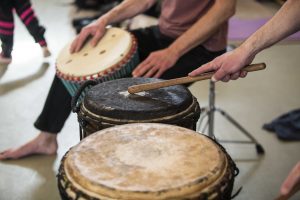
West African Dance in the West
“I am a big proponent of teaching dance history. I make it a number one focus in my classes … people need to understand where many dance forms have come from … African dance,” Banchero said. She discussed how she teaches an Introduction to Jazz class at Salt Lake Community College. When teaching this class, Banchero chooses to incorporate this history she is so passionate about in her teaching.
“The students are always surprised,” Banchero said. “They are like ‘I never expected to get so much information about the history of jazz dance.’ They just kind of think it’s like Broadway and classical jazz.”
Banchero made it what she called, “a huge priority” to incorporate the original roots of where common dance forms like jazz and hip-hop come from.
We then discussed which main events really brought African dance to the United States. The biggest was the slave trade. The African people, as we hopefully know from our own history classes, brought over their culture during these dreadful times, trying to hold on to what they knew.
“One of the biggest slave exporting areas was in Ghana,” Banchero said. “You can go to the slave museum in Ghana and see where they were. I have been there.” The African people are still living with the strong ties to those times, and it is heartbreaking. They kept their dance through the ages, and it has sprouted into many newer dance forms today. But, even with these new branches, they are all rooted in the original rich dance form.
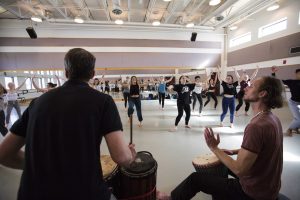
In her West African class held at the U, Banchero mentioned how many Westerners visit West Africa to train in the dance styles and learn more about them. Some go just to dance and workout, but some, like Banchero, go with an academic mindset of truly learning all aspects related to the dance form. So how did they start traveling to gain this experience? Banchero brought a story up about ballet companies. She assured me not to get it confused with our Western idea of a ballet company. When using the term in this context, we are talking about what she termed as a “troupe or performing group.” These troupes, Banchero said, “make their way to the U.S. or Europe for performance opportunities. Then, a lot of them are able to stay in the U.S. for longer periods of times with working visas or they get married … so, when they go back to their countries, they often bring back a lot of Westerners with them.”
Over many decades it has evolved into Westerners visiting more often in what Banchero called “immersion trips.” Similar to the idea of a study abroad program, performers and master artists come to the U.S. and establish themselves personally, creating their business and art. Banchero then said, “Once a year, or every couple of years, they do an … immersion trip to go be in Africa.” It provides Westerners the chance to learn and gain experience from professional dancers. Banchero herself goes to these camps and conferences and actually just got back from one in January 2019. She shared how it’s the best way to truly learn the culture, dance technique and actually be qualified to teach. Banchero mentioned how the country has chosen to work hard to keep their art safe and wholesome, pure to its roots. To be able to really understand this dance form, it’s best to train under these dance masters instead of going and trying to learn by yourself. Banchero said it’s like “finding the best tour guide.”
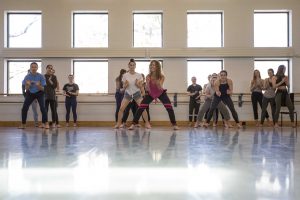
Learning the Culture
Banchero has always loved jazz and hip-hop. Her spunky demeanor and zest for life loved the pop and beat of these dance forms. “I just seemed to move that way naturally,” she said. She then received her bachelors from the U in modern dance (one of the programs she now teaches for). How did she come to find West African dance? She found history. Banchero said, “I was teaching a lot of jazz and hip-hop. But, I was aging out of that particular scene, so I decided that I needed to keep myself in the now. I thought it would be good to start teaching the history of hip-hop and jazz, and that led me to African dance. I always say, once I took my first African class, I felt as if the mothership had landed. It just seemed like, this is how I’m supposed to be dancing.” After being introduced to her passion, Banchero started asking, “Why don’t we dance this way?” To answer her question, she began really studying African dance — the culture, the heritage and the technique. She then made her first trip to Guinea and has continued to go back for the last 10 to 11 years.
Banchero’s specialty is in Guinean dance forms, primarily. She shared how “usually African people are very supportive and very happy to see their culture out and are excited to see that this would even be in a curriculum at the college level. They are like, ‘wow, this is a required class for modern dance majors.’ They are typically really excited and inspired and happy to see it.” But she was sure to say the only reason for which they can say they are excited is that she is qualified to teach their dance. Banchero has taken steps and put in the work to be able to teach their culture properly and respectfully. Rightfully so, she wants to make sure African dance is being taught correctly at this level. She has to receive permission from her teachers. With Guinean dance, Banchero said, “I know what I am doing,” and she has received the needed permission to teach Guinean African dance.
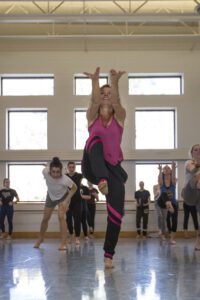
Pushback & Response
We can’t ignore the almost inevitable pushback from all different kinds of people when looking at this subject. Many of Banchero’s African teachers and colleagues are overjoyed with how their culture is being shared and taught. However, there are some who don’t appreciate or condone what is happening, however. Banchero shared how “some are still angry … there is a lot of ancestral pain.” Because of what has occurred throughout history, they feel it’s their heritage, not ours. So, instead of responding in an argumentative or defensive fashion, Banchero has found there are ways for her to communicate why her heart is in the process of learning and teaching West African dance.
Banchero enters into these communities and cultures and asks herself and others “how are you helping these people?” She takes it upon herself to prove to them her love for individuals — their culture, their art and their families. She supports them by “trying to learn the language.” Banchero ends up using a mixture of the Susu, French, English and even a bit of pantomime. This attempt at really communicating is just one of many steps she takes to ensure trust and to let them know that she is in this for more than just the fun of dance or the exercise involved. Banchero invests in artists’ families. She helps by sending money grams to help pay for a month’s worth of food, or just supports their culture and traditions through an eagerness to learn. Even when participating in the immersion trips, she works on having supportive conversations with the tour groups to ensure negative feelings and pushback are dealt with healthily. She tries to help everyone listen to one another, respect one another and create real relationships with one another. Lastly, Banchero gives her personal respect. No matter how many classes or conferences she goes to, she doesn’t teach styles her teacher and mentors haven’t said she has permission to teach. Banchero holds the culture at a high level of esteem, reassuring anyone who pushes back — there are no feelings of stealing or changing, just protecting and learning.
Teaching the Dance
Banchero teaches at a number of places in Utah: the U, Utah Valley University, Salt Lake Community College, Repertory Dance Theatre and through her company, Wofa. When asking Banchero what she thought about teaching this culturally rich dance to Utah students, she simply said, “It’s amazing … the best thing.” Her joy is teaching and sharing her passion with those who aren’t exposed and may never be. As a student at the U, definitely consider taking her West African dance class during Spring semester. You can also attend her dance center class offered at Repertory Dance Theatre on Saturday mornings for a student fee of $5 (with valid student ID).
The opportunity to learn about a culture so different and so immensely rich is, unfortunately, rare in our Western world. To have a teacher who knows the issues, understands the people and is dedicated to learning all that is necessary to teach is an amazing opportunity. Plus, the time you spend dancing to the djembes will never feel like time wasted.


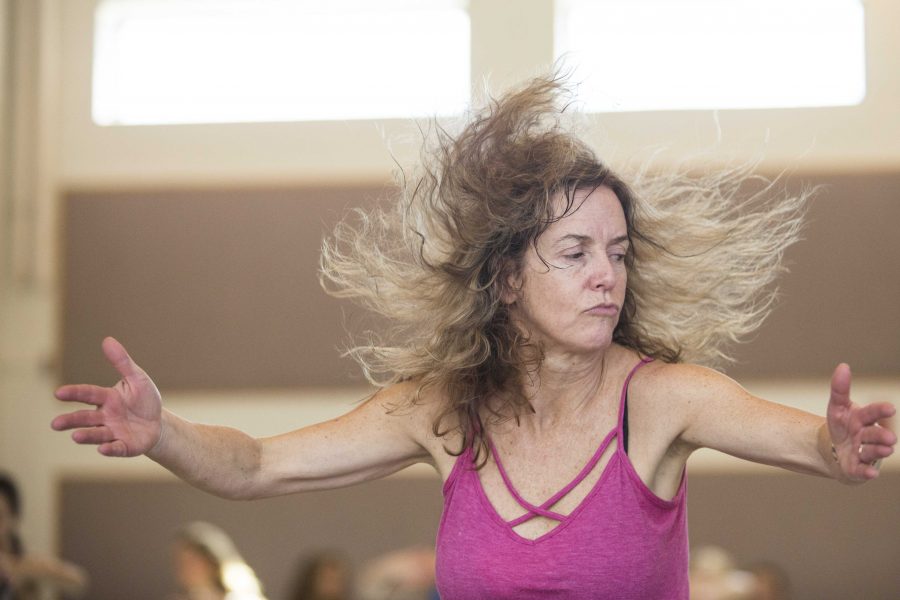


Ntifafa Akoko Tete-Rosenthal • Sep 22, 2020 at 10:11 pm
Good evening, would you happen to know who the mentors and teachers were/are that Ms. Banchero studied Guinea dance with?